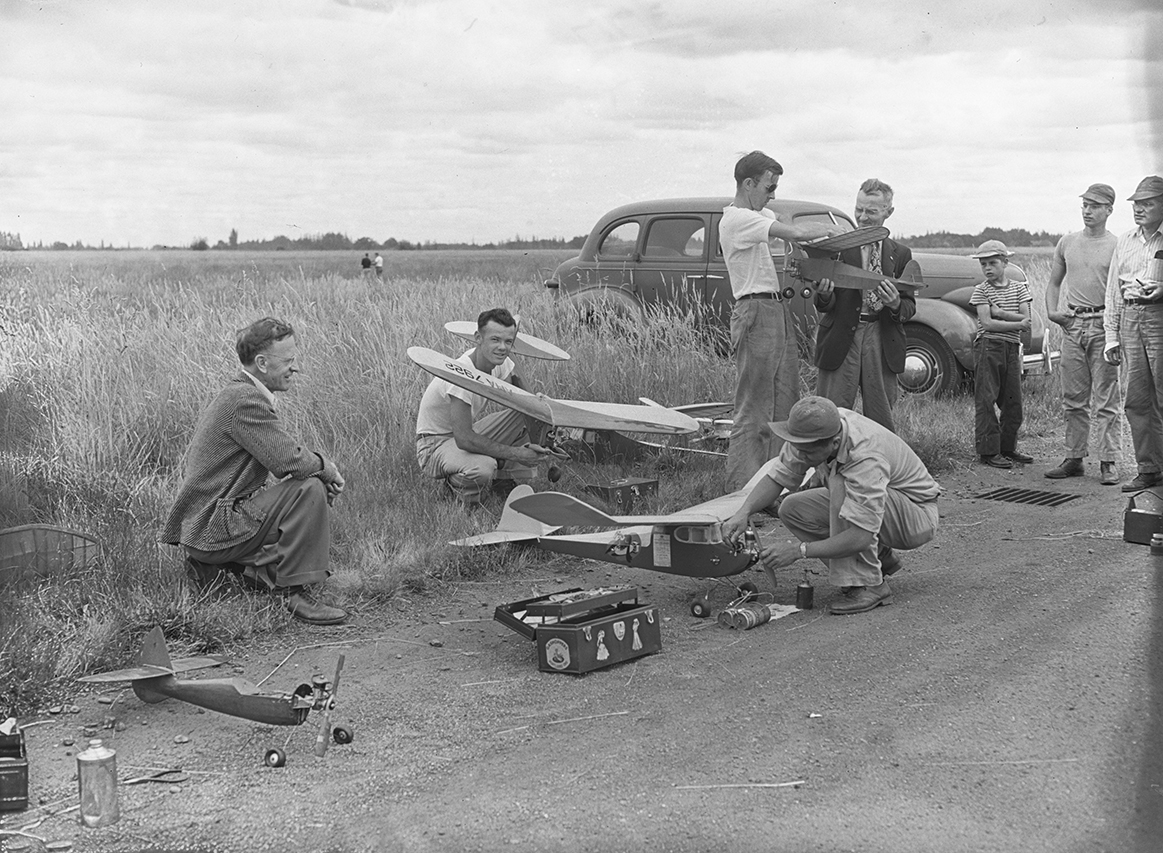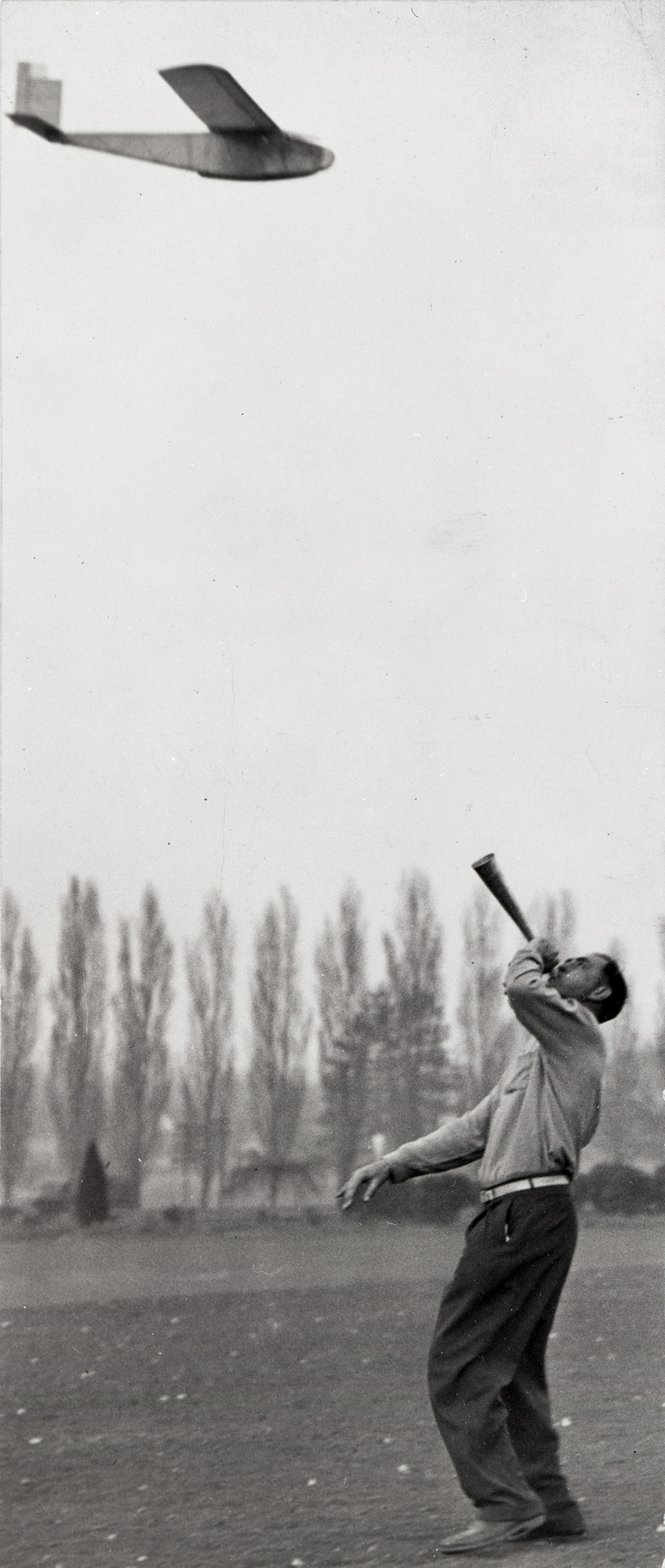When Nevilles E. "Jim" Walker, the founder of the American Junior Aircraft Company, died in Portland in 1958, he may have been the best-known, most influential figure in the model aircraft business. His company, which in over three decades manufactured an estimated 232 million ready-to-fly kits, was renowned for the high quality and "flyability" of its products, mainly inexpensive balsa and rubber-band-powered planes.
Jim Walker was born in California on April 29, 1904, and moved with his family to Portland in 1909. When his father was killed in a railroad accident in 1916, hard times came to the Walker household, and Jim was unable to go to college or fulfill his boyhood dream of becoming a pilot. Instead, he took up building model planes to sell. By the time he was in high school, he had set up an assembly line in his basement and was employing neighborhood kids to do the work. He sold the planes to five-and-dime stores and to the Meier and Frank Department Store.
The aviation craze inspired by Lindbergh's Atlantic flight in 1927 substantially boosted his business, and in 1929 Walker was able to buy out his initial investors and establish the American Junior Model Company, with himself as president, his brother Bill as vice president, and his wife Dora as secretary-treasurer. Despite the stock market crash that year and the ensuing Depression, American Junior flourished, in no small measure because of Walker's talents as a genial promoter and showman. He could dazzle hard-nosed retail managers and children and their parents alike with impromptu aerobatic demonstrations of his gliders and, later, his engine-powered planes. Walker’s favorite sales approach was to enter a store manager’s or distributor's office and launch a succession of gliders, which would fly around the executive's desk and return to his hand.
Over his career, Walker registered thirty-one patents, some of which changed the course of model aviation. He invented U-Control, which inaugurated control-line flying of engine-powered models, and he was a pioneer in the development of various devices for radio-control flying. During World War II, American Junior supplied thousands of beefed-up versions of its popular Interceptor folding-wing gliders for use in anti-aircraft gunnery practice. When catapulted to 300 feet, the models (with 16-inch wingspans) fooled gunners, who thought they were real fighters flying 300 mph at 1,500 feet. After the war, Walker made regular appearances for American Junior and the model airplane industry at air meets and model-plane shows, often flying three of his Fireball U-Control planes simultaneously.
The company disbanded a few years after his death; but in recent years an admirer and protégé, Frank Macy of McMinnville, revived the AJ line as American Junior Classics, selling both exact replicas of Walker’s planes and the company's unsold stock of kits. Macy died in May 2009, and there are apparently no plans to continue his re-issue of Jim Walker's irresistible little airplanes.
-
![]()
Model airplane competition at McMinnville Airport, 1947.
Oregon Historical Society Research Library, Monner, Org. Lot 1284
-
![Jim Walker used a horn to guide the model airplane at Westmoreland Park.]()
Jim Walker with model airplane, March 1947.
Jim Walker used a horn to guide the model airplane at Westmoreland Park. Oreg. Hist. Soc. Research Libr., bb006675
Map This on the Oregon History WayFinder
The Oregon History Wayfinder is an interactive map that identifies significant places, people, and events in Oregon history.
Further Reading
Bill Winter, "Straight and Level: Jim Walker and American Junior," American Aircraft Modeler (Nov. 1968).
"American Junior Factory Tour 1961." Jim Walker's American Junior Classics (video).
Virgil Smith, "Biggest Little Plane Plant in the World," Oregonian, April 22, 1944.


